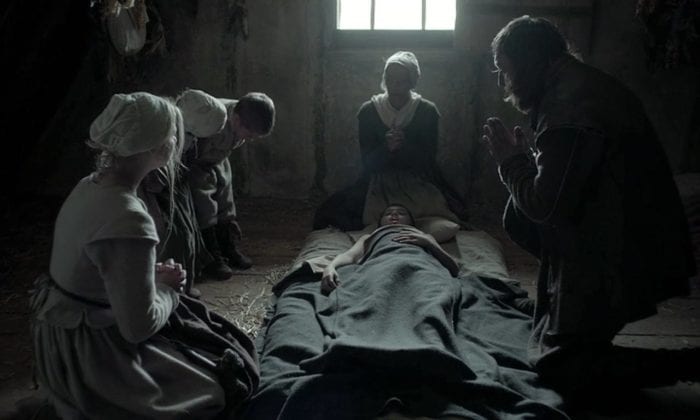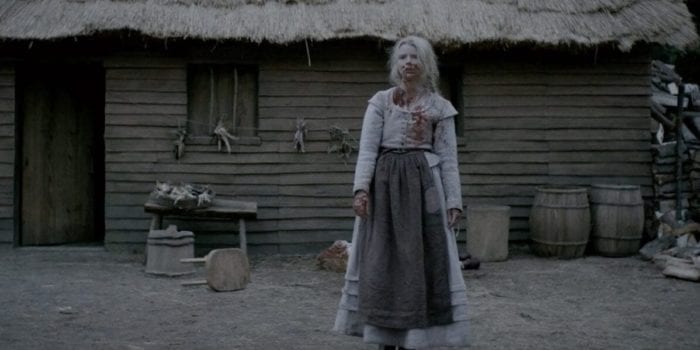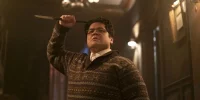The Witch is arguably the most divisive horror film of the last decade. While critics and cinephiles praised it as one of the best genre movies of our generation, general audiences lambasted it as boring and unscary. It’s truly a “love it or hate it” kind of film, and there seem to be very few people who fall between those two extremes.
Now, I totally understand why a lot of people don’t like The Witch (because I used to be one of them!), but I personally fall on the “love it” side of the divide. Sure, it’s very different from what mainstream audiences are used to, but if you just accept it on its own terms, it’s a masterpiece of genre filmmaking. It’s beautifully shot, it features outstanding performances, and it’s saturated with an atmosphere of dread from beginning to end.
On top of all that, The Witch also has a great message, and that’s what I’d like to talk about in this article. Most people view it as a story about female liberation, but I don’t think that’s quite right. Sure, the movie definitely deals with the oppression of women and the hardships they’ve faced throughout history, but I would suggest that the ending isn’t nearly as positive as a lot of people make it out to be. Instead, I think it’s actually pretty tragic, and to see why, let’s take a deep dive into this modern classic.
The Usual Interpretation

The Witch is about a Puritan family in the 1600s who leave their community and go live in the woods. The father of the family, a prideful man named William, accuses his entire community of being “false Christians,” and he believes that he, and only he, understands Christianity correctly. In his estimation, everybody else in the world gets the Christian faith wrong, and he wants to separate his family from the heretical mass.
Once they get to their new home, things start to go awry almost immediately. The family loses their baby boy Samuel, they have trouble gathering enough food, and eventually, their oldest son Caleb dies, too. All these problems put tremendous pressure on William and his wife Katherine, and for some reason, they seem to take it out on their oldest daughter Thomasin. For example, they talk about sending her away to serve another family, and when Caleb dies, they accuse her of being a witch and blame her for her brother’s death.
Soon, all this oppression becomes too much for poor Thomasin to bear. At the end of The Witch, she renounces her merciless Puritan upbringing and joins the coven of witches that was presumably terrorizing her family the entire time. She invites a goat named Black Phillip to speak to her, and surprisingly, it responds. It asks her if she wants to “live deliciously,” and when she says yes, Black Phillip leads her to the other witches, where she becomes one of them.
Now, there’s more than one interpretation of The Witch floating around out there, but in my experience, this ending is typically seen as liberating. William and Katherine are viewed as the “bad guys,” and in an unexpected twist, the witches and Black Phillip are understood to be the heroes of the story. They free Thomasin and allow her to “live deliciously,” which is usually taken to mean that she can now live for herself and do what she wants rather than what her family tells her to do.
What’s more, Thomasin’s liberation is usually seen as an allegory for female liberation in general. Throughout history, women have been oppressed and controlled by prideful men, and they’ve been prohibited from living freely and reaching their full potential. In particular, in the West, they’ve often been limited to just two choices (being nuns or submissive, stay-at-home wives and mothers), and Thomasin’s rebellion against her Puritan upbringing is viewed as a rebellion against all that oppression. It’s considered an allegory for women everywhere breaking off the shackles of patriarchy and finally getting to live the way they want rather than confining themselves to the roles men allow them to occupy.
One Big Problem

Now, the way I see it, there’s a lot of truth in that interpretation of The Witch. For instance, Thomasin’s family definitely oppresses her and treats her unfairly, and her experiences do clearly parallel the experiences of women throughout most of human history. However, there’s one element of the common interpretation that I simply can’t get on board with: its view of the film’s ending.
While I understand why a lot of people think it’s liberating, I believe that a closer look at it actually reveals something very different. Let’s consider the group Thomasin is joining. These witches “live deliciously,” and in isolation, that sounds great. We all want to be free to choose our own paths and enjoy our lives.
However, in the context of The Witch, that kind of life comes with a dark side that outweighs any positives it may have. These witches don’t simply enjoy life in an innocent way. They don’t simply live the way they want and let other people do the same. No, they “live deliciously” at the expense of other people.
At one point in the movie, a witch steals a baby and kills him in order to make a flying ointment, and that alone makes Thomasin’s fate tragic rather than liberating. She joins a group that literally murders babies, and I can’t see how that could possibly be construed as a good thing.
Sure, a lot of people argue that it’s better than the life she led with her oppressive family, but that’s beside the point. True liberation isn’t going from terrible to not quite as terrible. True liberation is going from a bad life to a genuinely good one, but these witches are pretty much the pinnacle of evil. Thomasin is going to ruthlessly murder the most innocent and helpless people in our society, so what she experiences at the end of The Witch isn’t true liberation. It’s simply oppression redistributed.
A Cautionary Tale

So if I don’t think The Witch is a story of female liberation, then what do I think it’s actually about? Well, I see it as a cautionary tale about the way we treat others. See, as bad as it is to join a group that literally murders babies, Thomasin apparently thought it was better than what her life had been up until that point, and that speaks volumes.
Her choice to become a witch shows just how bad her treatment at the hands of her family really was, and that in turn serves as a warning for us against acting that way in our own lives. It shows us that we need to treat people with compassion, dignity, and respect, and we shouldn’t use other people as scapegoats for our own problems or keep them from choosing their own paths in life. Simply put, we have to treat other people as people, not as objects we can use and abuse at will.
That being said, I do think The Witch puts a feminist twist on this general message. By focusing on the oppression of a young woman, it’s telling us that women deserve to be treated with the same dignity and respect we give men. It’s highlighting one specific way our species has massively dropped the ball throughout most of its history, and by doing so, it’s urging us to be better and to create a society in which everybody, not just men, can be free and flourish.



